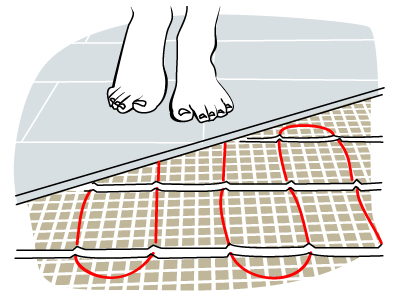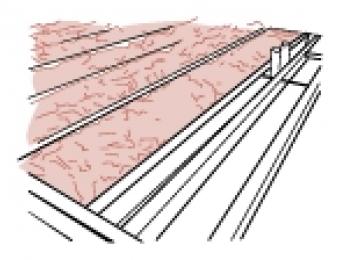
How does underfloor heating work?
If you are concerned about the temperature of your floor during those cold winter months, you might consider the benefits of underfloor heating. This is typically accomplished by running electrical coils under the floor but can also be achieved using hydronics.
The coils or water pipes heat up the floor which not only cuts out heat lost through there but radiates heat back upwards through the house. This can help reduce regular heating bills, particularly in floors with a high thermal mass which will retain and radiate the heat for longer.
How is underfloor heating installed?
In-slab heating
In-screed heating - In this system, a layer of sand and gravel is poured over the concrete slab to form a tile bed called screed, which is a smoother surface to tile upon. The wires are laid in this layer called screed and fixed down to the concrete slab by a fine mesh or special fixing clips, and the floor finish is laid on top. Heat transfers from the wires into the screed, which then warms the floor finish.
Under-tile heating/carpet floor heaters - In this system, the wires used are generally extremely thin and placed on top of both the concrete slab and the screed, directly under the tiles. The heat generated from the wires transfers directly into the tiles and up into the room, making this one of the quickest heating systems. Carpet floor heaters work in a similar manner, except with carpet on top instead of tiles.
Efficiency and cost
Most underfloor heating systems require electricity which contributes to carbon pollution, and can put a big spike in your power bills if they're not used prudently. In-slab electric underfloor heating consumes more than the other types, simply because it requires so much energy to heat the slab. If you do have an in-slab system, it's a good idea to set it to engage during off peak electricity hours when it will cost you much less. Smaller floor areas should require less heating less often, so finding a system that allows you to selectively control heating 'zones' will also help you save money.
Hydronic systems don’t use as much electricity (especially if they're gas heated), but require boilers and heat pumps to circulate the hot water and antifreeze solution around the pipes, so will be more demanding in terms of upkeep. Hydronic under floor heaters are more complex systems and they can also run the risk of rupturing, allowing liquid seepage into the slab (they can only be installed in slab floors).





